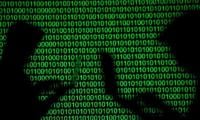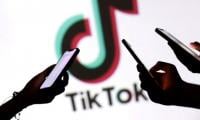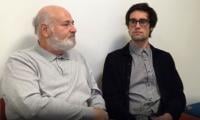All along it has been a road strewn with enormous difficulties. Since his first election in May 2013, Iranian President Hassan Rouhani has carried the hopes of millions for both opening up of the socio-political order and an economic turnaround in his country. However, a combination of domestic and external factors has held him back from delivering on his promises. The recent mass demonstrations in Iran are an expression of distrust not only in Rouhani but also in the Iranian establishment.
Rallies and protests are difficult to come by in Iran as the government runs a tight ship. The last time the Iranians were up in arms was in 2009 in protest against the disputed presidential election. Learning from its mistake, the conservative Iranian establishment ensured that the popular mandate was fully respected in the next two presidential polls (2013 and 2017), thus paving the way for landslide victory of a reformist Rouhani on each occasion.
There are two power poles in Iran: One comprises the popularly elected president and the Majlis (legislature); the other is represented by the clergy-dominated establishment presided over by the supreme leader or Rahbar. The one stands for the popular will; the other believes in ‘controlled’ democracy. The Rahbar holds a unique position in Iranian political system. He is the guardian of the revolution, the custodian of the constitution and the overall supervisor of the system.
Post-revolution Iran has witnessed a relentless struggle of reformists against hardliners, particularly as a new generation sprang up, for more openness and democracy. However, hardliners – because of their greater power and influence and because of the loyalty of the military, particularly the revolutionary guards – have remained a tough customer. The reformists secured their first major win in the landslide victory of Khatami as president in 1997.
Then in 2000, the conservatives were defeated in parliamentary elections by the reformists. Khatami’s re-election in 2001 by an overwhelming majority again underlined the need for reforms. That, though, did not do much to curtail the influence of the conservatives who continued to assert themselves through powerful institutions like the Guardian Council, which oversees the constitutionality of laws and determines the eligibility of candidates for public offices, and the judiciary. The two back-to-back presidential terms (2005-2009 and 2009-2013) of Ahmadinejad shored up the powers of the conservatives.
The tension between the conservatives and the reformists assumed heightened significance after the 2009 presidential polls. Though the state managed to quell the widespread protests against the ‘rigged’ election, that only highlighted the enormity of the tension.
Iran’s nuclear programme pitted it against world powers and invited international sanctions, which took a toll on the economy. Minerals and oil exports have been the mainstay of the economy and they were hit hard by the sanctions resulting in shrinking output, widespread unemployment and hyper inflation.
At the same time, the Islamic revolution and the regime’s policy to champion the cause of Shias in the Middle East and elsewhere sharpened the schism between Iran and its Sunni neighbours, particularly Saudi Arabia. Not only that, it also forced Tehran to step up its military expenditure at the expense of its development budget. To make the authoritarian political system palatable to the people, the government provided substantial subsidies, which put public finances under a lot of strain.
Rouhani’s tasks thus have been to lead a successful compromise both within the country – between the forces of change and the establishment – and between Iran and the West, and to shape up the economy. The July 2015 Joint Comprehensive Plan of Action (JCPA), commonly known as the Iran nuclear deal, agreed between Iran and major powers has so far been his biggest achievement. The JCPA represented a trade-off: Iran would put curbs on its nuclear programme in exchange of the lifting up or softening of international sanctions that had crippled its economy.
Although most of the sanctions have gone, some remain in force. US citizens, natural as well as legal, are forbidden to do business with Iranian companies; thus effectively preventing Iranian banks and other financial institutions from doing business with their counterparts in other countries. These restrictions constitute the foremost obstacle to Iran’s foreign trade and investment as well as its full integration into the international economy.
While running for the office of the president, Donald Trump had dismissed the JCPA as the ‘worst deal in history.’ Trump’s presence in the White House continues to cast a pall over the fate of the agreement. He has already branded Iran as ‘the world’s number one terrorist state.’
The present unrest started in Mashhad, Iran’s second biggest city after Tehran, over rising prices and unemployment, and in no time spilled over to other parts of the country. Essentially, the protests were prompted by the state of the national economy.
In the wake of the lifting of international sanctions, the economy registered strong growth of 12 percent mainly due to the stellar performance of the energy sector. However, according to an October 2017 World Bank paper, the estimated growth for 2017 is a modest 3.5 percent. The growth forecasts for the next two years (2018 and 2019) are 3.9 and 4.1 percent, respectively. The consumer price index (CPI) inflation is projected to be in double digits for 2017 (11.5 percent), 2018 (10.9 percent) and 2019 (10.6 percent).
As the World Bank puts it, unemployment continues to be high (more than 12 percent) and the performance of the non-oil sector remains subdued as foreign direct investment has fallen well short of expectations. This is for two reasons: continuing US sanctions on Iranian banks and uncertainty shrouding the fate of the nuclear deal.
The effects of the state of the economy have been compounded by such related factors as the government’s austerity measures, which inter alia curtailed public cash transfers and oil subsidies, and the collapse of a number of financial institutions that had registered a mushroom growth in recent past. Political and economic uncertainty provides a fertile ground for unproductive or speculative investment to thrive. The Iranian economy saw a real-estate and construction boom which, unlike investment in the manufacturing sector, has a limited impact on job creation.
The line between economic and political discontent is rather thin. Hence, the recent protests have also provided an opportunity to the country’s exasperated people to launch a vitriolic attack on the political system. Iran’s foreign policy, which commits the government to divert a considerable portion of public resources to supporting ‘friendly’ governments and movements in the region, has also come under stinging criticism.
The call for change in Iran is at present moderate. There are few voices for changing the basic character of the constitution or for counter-revolution. All notable forces agree that Iran should continue to be an Islamic republic. Nor is there any demand of note for abolishing any of the existing institutions including the controversial Guardian Council. Only reform of the existing institutions is being sought to make them less authoritarian, more democratic and open, more accountable to people and their elected representatives, and more progressive in tune with the moment and the milieu. That is why the electorate voted so heavily for a reformist in the recent presidential elections.
The mass protests, however, do portend a danger for the regime in the years to come. The real force behind the call for reforms is the younger generation which makes up nearly two-thirds of the Iranian population, and who are creaking under the twin strains of political repression and economic meltdown. Since they do not belong to the generation which brought about the revolution, their commitment to revolutionary ideals is not as sweeping as that of the earlier generation. Though at present moderate, their discontent may assume dangerous proportions if their concerns continue to be brushed aside.
The writer is a freelance contributor.
Email: hussainhzaidi@gmail.com















